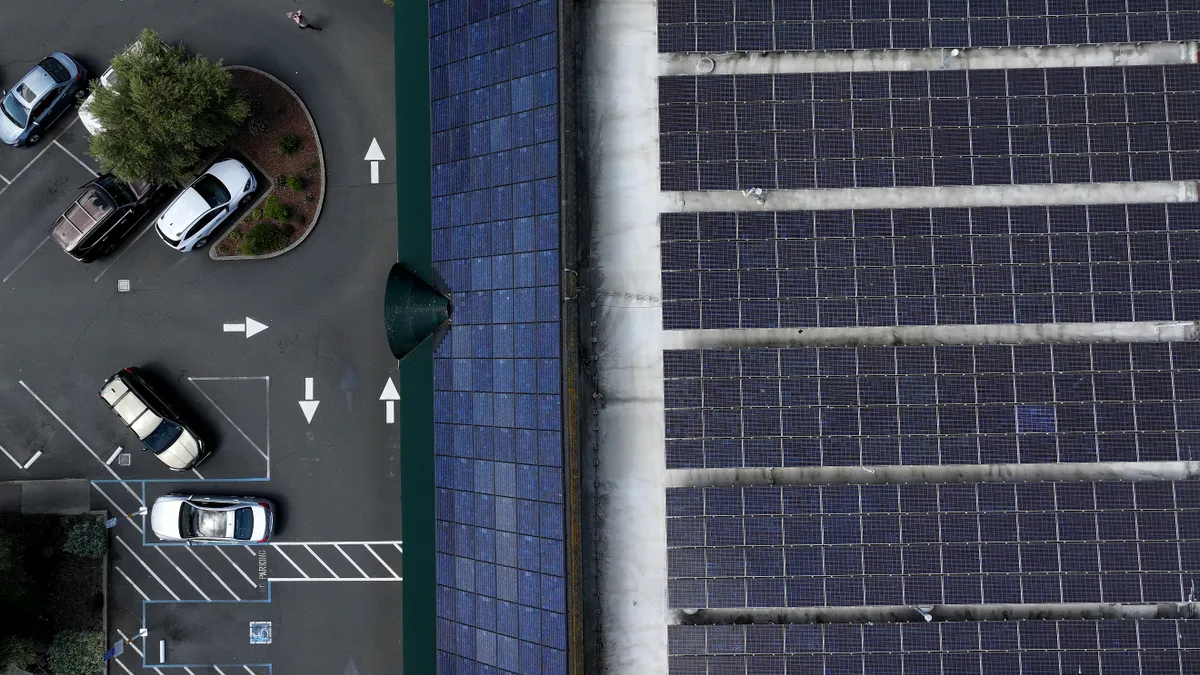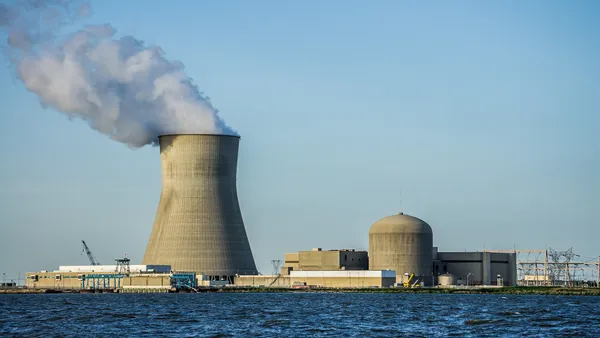Update, June 30, 2022: Rhode Island Gov. Dan McKee, D, on Wednesday signed legislation requiring the state’s electricity use to be completely offset by renewables by 2033. According to the governor’s office, it is “the most aggressive renewable energy standard among any U.S. state.”
The legislation “outlines a firm 10-year commitment to achieve our climate change mitigation goals,” McKee said in a statement.
State law currently requires 1.5% increases each year in the amount of electricity generated from renewable sources through 2035. The new law accelerates the requirements to achieve a 100% renewable energy standard by 2033.
Dive Brief:
- Rhode Island lawmakers have approved legislation to require that all of the state’s electricity be offset by renewable energy by 2033. The measure now heads to the Senate, which last month passed an identical bill.
- The legislation would not prohibit utilities from using fossil fuels, but backers say it will result in a “corresponding amount” of renewables to be produced in the region and encourages construction of new green energy projects.
- Rhode Island’s Renewable Energy Standard currently requires utility companies to purchase renewable energy certificates for 19% of electricity sales this year, increasing 1.5% per year through 2035. The bill, 2022-H 7277A, would more aggressively accelerate those requirements.
Dive Insight:
Rhode Island law requires the state to achieve economy-wide net-zero emissions by 2050, and legislation passed by the House this week supports that goal, according to the bill’s sponsor, Rep. Deborah Ruggiero, D.
Under Ruggiero’s bill, Rhode Island’s RES target would increase by an additional 4% in 2023; 5% in 2024; 6% in 2025; 7% in 2026 and 2027; 7.5% in 2028; 8% in 2029, 8.5% in 2030, 9% in 2031 and 9.5% in 2032, to achieve the 100% goal in 2033.
“In addition to reducing emissions and our reliance on fossil fuels ... creating renewable energy supports the green industry, creating thousands of good paying jobs right here in Rhode Island,” Ruggiero said in a statement.
Rhode Island has already seen a 74% increase in green jobs since 2014, “and that trend is going to continue as we deepen our commitment to renewables,” Ruggiero said.
The RES “does not guarantee that the actual energy used in Rhode Island came from a renewable source, nor does it prohibit any utilities from supplying energy generated by fossil fuel,” according to Ruggiero’s statement. But the bill is expected to result in the generation of a “corresponding amount of renewable energy in the region and encourages construction of renewable projects.”
A 100% renewable energy requirement “will keep Rhode Island, home to the nation’s first offshore wind farm, on the forefront of renewable energy innovation,” Senate President Dominick Ruggerio, D, said in May following passage of an identical measure.
According to the U.S. Energy Information Administration, in 2020 about 89% of Rhode Island electricity was generated by natural gas, with most of the remainder coming from solar, wind, and biomass resources.
The state has plans to add large scale offshore wind and is home to the first offshore wind turbines deployed in state waters. Deepwater Wind’s 30 MW, five-turbine Block Island Wind Farm began operating offshore Rhode Island in 2016.
The House bill passed this week “doesn’t mean we won’t have any dependence on gas and oil, but this will make us much less dependent on fossil fuel and more reliant on renewables, to move us toward a resilient future,” Ruggiero said.















